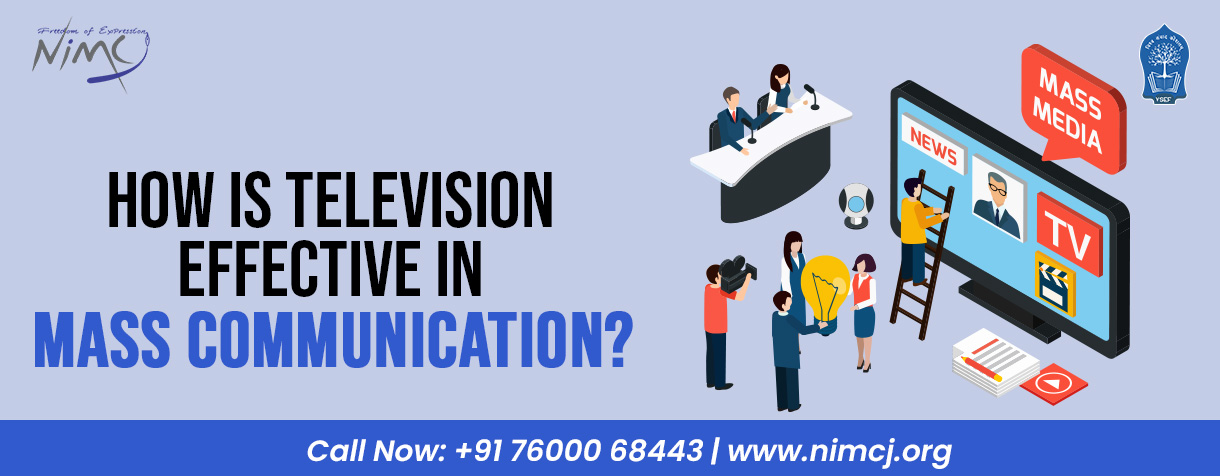
Television has been a powerful medium of mass communication for decades. Despite the rise of digital media, TV remains an effective tool for reaching and engaging large audiences. In this blog post, we will explore the various ways in which television excels as a mass communication medium and why it continues to be relevant for mass communication students and professionals.
One of television's greatest strengths is its ability to tell compelling stories through a combination of visuals, sound, and motion. TV allows communicators to convey complex information and evoke emotions in ways that other media cannot match. The visual impact of television helps create an emotional connection between the audience and the content, fostering empathy and a deeper understanding of the issues being presented.
Television has an unparalleled ability to reach a vast and diverse audience. Despite the growth of streaming services, broadcast and cable TV still dominate overall viewership, comprising 53% of total TV viewing time in the US as of May 2023. Older demographics in particular rely more heavily on television for news and information compared to the internet. This broad reach makes TV an essential medium for mass communicators looking to disseminate messages to the widest possible audience.
Television plays a vital role in delivering news and current events to the public. The immediacy and visual nature of TV news coverage allows journalists to bring stories to life, providing context and impact that can be harder to achieve through other media. 24-hour news channels offer constant updates and live reporting from the scene of breaking stories. Television news has the power to shape public opinion and understanding of important issues.
Television programming both reflects and influences cultural values, norms, and trends. It exposes audiences to diverse perspectives and experiences, sparking important conversations and shifts in public discourse. Iconic TV shows and characters become touchstones in the cultural zeitgeist. For mass communication students, understanding television's role in shaping culture is crucial.
To maximize television's potential as a mass communication tool, it's important to employ effective audience engagement strategies:
Know your audience: Understand the demographics, preferences, and viewing habits of your target audience to create relevant content.
Leverage social media: Encourage viewers to interact with TV content on social platforms to extend reach and foster deeper engagement.
Utilize interactive features: Incorporate polls, quizzes, and other interactive elements to make the viewing experience more active and engaging.
Personalize the experience: Use data and analytics to deliver targeted recommendations and advertising to keep viewers engaged.
Television entertainment is not just about escapism; it also has the power to influence social norms, attitudes, and behaviors. Popular shows and characters can become cultural touchstones, sparking conversations and challenging stereotypes. For example, the show "Satyamev Jayate" hosted by Aamir Khan tackled sensitive social issues like female foeticide, child sexual abuse, and caste discrimination, generating widespread awareness and debate. Mass communication students should explore how entertainment content can be leveraged for positive social change.
Television remains a preferred medium for advertisers looking to reach mass audiences. The visual nature of TV ads allows for creative storytelling and emotional appeals that can influence consumer behavior. In a consumerist society like India, television advertising plays a significant role in shaping aspirations, lifestyles, and purchasing decisions. Understanding the persuasive techniques used in TV advertising is essential for mass communication students.
Television remains a powerful and effective medium for mass communication. Its ability to reach large audiences, tell compelling visual stories, deliver impactful news, and shape cultural conversations makes it an essential tool for mass communicators. By understanding TV's strengths and employing smart engagement strategies, mass communication professionals can harness the medium to inform, persuade, and connect with viewers. As the media landscape continues to evolve, television's role may shift, but its significance in mass communication is likely to endure.
Get into the field of mass communication and journalism by joining NIMCJ.
29 Mar 2024
Post by : NIMCJ